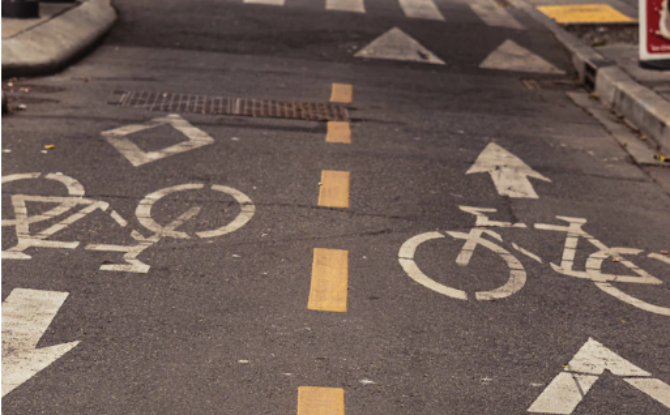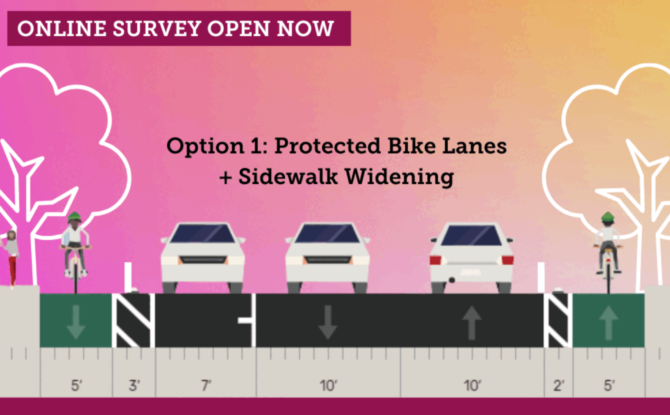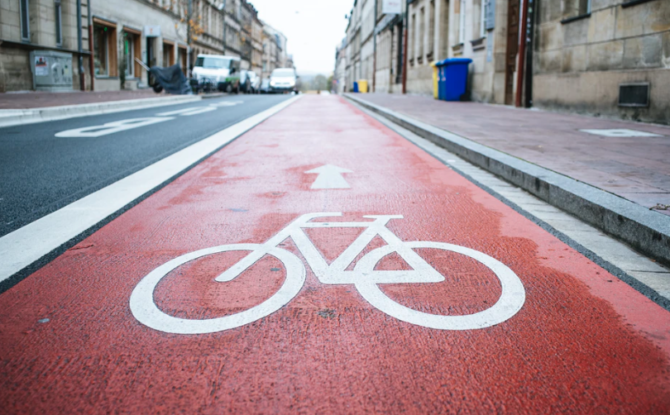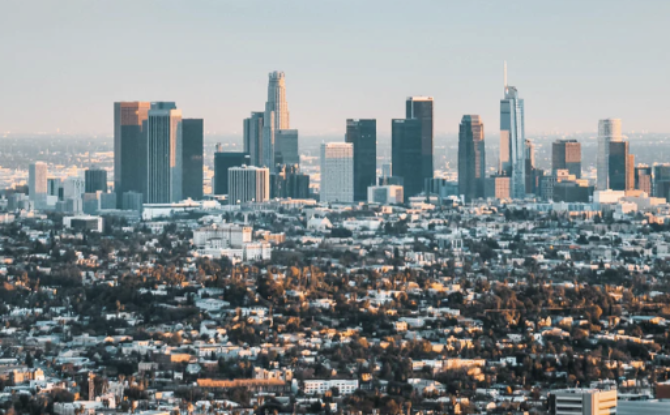From PeopleForBikes.org
By: Martina Haggerty, PeopleForBikes’ senior director of local innovation
With more protected bike lanes and low-stress bike networks being built across the country than ever before, we had a tough time picking this past year’s best new bike lanes. While numerous projects deserve recognition, we rounded up the top nine projects worth emulating.
9. Marin Boulevard Bikeway
Hoboken and Jersey City, New Jersey
In November, Jersey City and Hoboken completed construction on the Marin Boulevard and Henderson Street bikeway, which was first called for in the “Let’s Ride JC Bike Master Plan” as a way to better connect the two cities. The expansion of CitiBike into Hoboken also increased demand to ride between the two cities, says Mike Lydon of Street Plans, who worked on the project’s design. In 2022, CitiBike’s most popular route was between Hoboken Terminal and Jersey City’s Hoboken Avenue and Monmouth Street, which saw a total of 5,500 bike share trips. With the completion of the Marin Boulevard project, those rides can now be made entirely on protected bike lanes.
The bikeway is separated from traffic with plastic curbing and flexible posts, and it includes a textured painted surface that makes the bikeway more visible and improves traction. As a “quick build” project, the cities chose to move forward with somewhat temporary materials to expedite the project and improve safety, something that wouldn’t have been feasible with more permanent materials that require sidewalk reconstruction and drainage work, not to mention a longer timeline. According to Lyndsey Scofield, senior transportation planner of Jersey City, this approach “provides us with more flexibility to iterate on the design over time as we learn what works well and what could be improved.”
8. Broad Street
Providence, Rhode Island
After being declared one of Rhode Island’s most dangerous streets, Providence worked with the local community to reimagine Broad Street with protected bike lanes, bus islands, and crosswalk improvements. While balancing the needs of local businesses, bus riders, and people walking and biking, Broad Street now serves as a key component of the city’s Urban Trail Network, improving safety and accessibility for some of the city’s poorest and most diverse neighborhoods to jobs and opportunities citywide, as well as access to three major urban parks and multiple regional trails. Space for the bikeway was created by removing a wide center turn lane, which also helped reduce speeding along the street.




